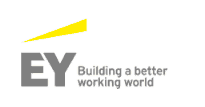- 15.5% of digitally active consumers currently use financial technology products
- Payment services are the most popular product offering
- Users are younger, wealthier and increasingly urban
- With 29.1%, Hong Kong has the highest rate of FinTech use of all surveyed markets
“Higher-income individuals are some of the most economically valuable customers for banks and insurers,” observed Steven Lewis, EY Global Lead Banking Analyst. “These organizations will have to review how their offerings, such as their own multi-channel strategies or partnerships with FinTech providers, meet their customers’ needs. Otherwise, they may have difficulty stemming the flight to FinTech.”
The levels of Fintech adoption among consumers are set to grow significantly in the next year, a change that will require traditional financial services companies to revisit their customer service strategies to compete effectively with new market entrants, according to EY’s first FinTech Adoption Index.
“The adoption of FinTech products is relatively high for such a new sector, so the risk of disruption is real. As FinTech continues to catch on among consumers, traditional financial services companies will have to reassess their view of which customers are most at risk from the new competition and step up their efforts to serve them effectively,” commented Imran Gulamhuseinwala, EY Global FinTech Leader.
According to a survey of 10,131 digitally active consumers in Australia, Canada, Hong Kong, Singapore, the UK and the US, 15.5% have used at least two Fintech services — financial services products developed by non-bank, non-insurance, online companies — in the past six months. Survey responses also suggest that adoption rates among digitally active consumers could potentially double within the next 12 months if respondents follow up on their intentions to use Fintech.
The index evaluates the use of 10 Fintech services in four categories: savings and investments; money transfer and payments; borrowing; and insurance. The 10 services include: peer-to-peer platforms for investments; equity or rewards crowdfunding; online investment advice and investments; online financial planning; online stock broking or spread betting; online foreign exchange; overseas remittances; non-bank money transfers; borrowing using peer-to-peer platforms; and health insurance premium aggregators or car insurance using telematics.
Payments, savings products prove the most popular
 Payment services have the highest adoption rate among Fintech products in the markets surveyed (17.6%). Services in this category include the use of non-bank providers to make online payments, online foreign exchange, and overseas remittances.
Payment services have the highest adoption rate among Fintech products in the markets surveyed (17.6%). Services in this category include the use of non-bank providers to make online payments, online foreign exchange, and overseas remittances.
Savings and investments is the second most-used category (16.7%). Online stock broking and spread betting is the most common activity within this category, followed by online budgeting and planning; online investments; equity and rewards crowdfunding; and peer-to-peer or marketplace lending.
Insurance services, including health premium aggregators and car insurance using telematics (7.7%), and online borrowing through peer-to-peer websites (5.6%) are among the less commonly used services by respondents.
Use of FinTech is greatest among younger, wealthier customers
Early Fintech adopters tend to be younger, higher-income customers. Respondents between the ages of 25 and 34 years old used at least two FinTech products in the past six months the most (25.2%), followed by those aged 35 to 44 (21.3%), and those aged 18 to 24 (17.7%). FinTech use is highest among consumers with incomes greater than US$150,000 (44.1%). Usage declines to 24% among consumers with incomes between US$70,001 and US$150,000, and 14.7% for consumers with incomes between US$30,001 to US$70,000.
Adoption rates are higher in urban areas
 Urban consumers tend to use Fintech at rates greater than the 15.5% average for all six regions surveyed. Online users in New York are more likely than users in the United States as a whole to use at least two Fintech services (33.3% in New York City compared to 16.5% for the US as a whole). The same is true of respondents in London who use online services (25.1% in London compared to 14.3% in the UK as a whole).
Urban consumers tend to use Fintech at rates greater than the 15.5% average for all six regions surveyed. Online users in New York are more likely than users in the United States as a whole to use at least two Fintech services (33.3% in New York City compared to 16.5% for the US as a whole). The same is true of respondents in London who use online services (25.1% in London compared to 14.3% in the UK as a whole).
Hong Kong has the highest rate of Fintech use of all markets surveyed (29.1%). The US has the second-highest adoption rate (16.5%), followed by Singapore (14.7%), the UK (14.3%), Australia (13%) and Canada (8.2%).
Product awareness is the greatest obstacle
For digitally active respondents who have not used two or more Fintech products in the past six months, 53.2% say they were unaware the products existed, followed by 32.3% who say that they do not have a need to use the products, and 27.7% who prefer to use a traditional financial services provider, while 21.3% say they do not understand how the products work. Trust has not been a major obstacle to Fintech use, with only 11.2% of respondents saying they do not trust FinTech products.
“This index shows that the innovations and changes of FinTech are here to stay. A co-existence and collaboration between the new and old market players will be inevitable,” opined Matt Hatch, EY Americas FinTech Leader. “There is much that traditional financial services firms can learn from how FinTechs think about the customer proposition and harness technology to deliver a compelling service.”


